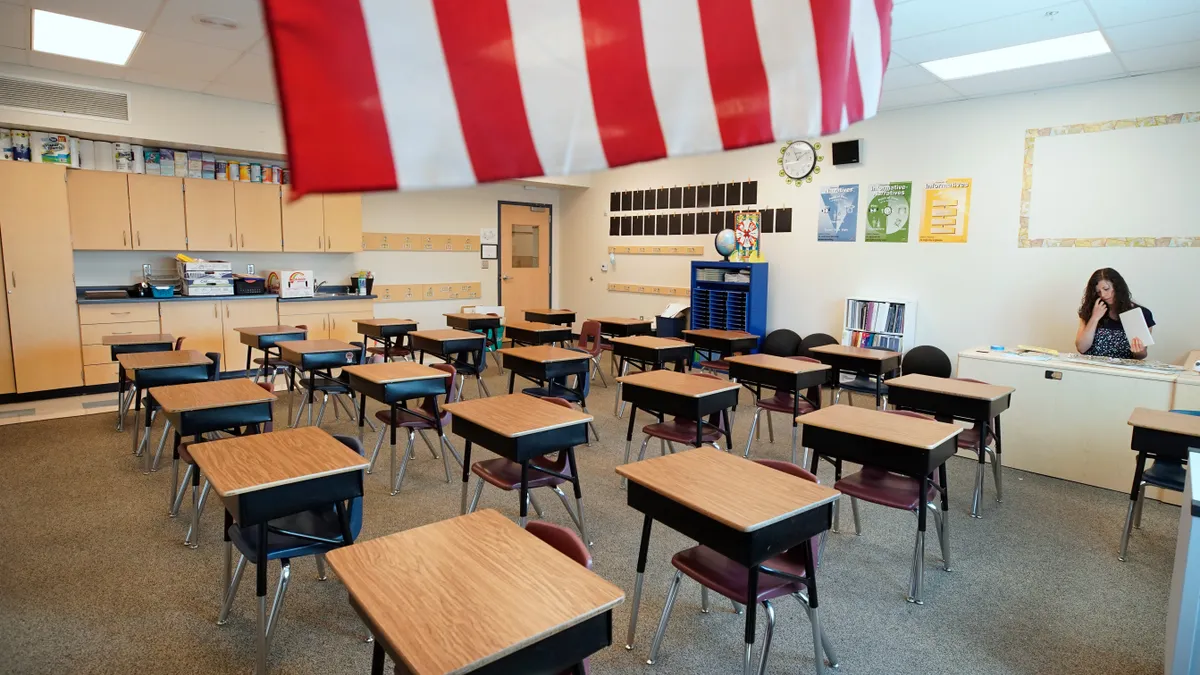Dive Brief:
- Two overlapping attendance policies in California could contribute to a decline in funding for the state's schools. The state reverted to its pre-pandemic average daily attendance policies for the 2021-22 school year, meaning schools will no longer use attendance from 2019-20 to calculate funding as in the previous academic year and will instead rely on average daily attendance of the 2021-22 school year.
- In addition to removing its "hold harmless" policy, California also announced it will be marking students in quarantine as absent, albeit excused, for the purposes of calculating attendance.
- "In this situation, quarantines would count as excused absences and would result in lower ADA calculations," said Hedy Chang, who lives in California and is the executive director of Attendance Works, in an email. "Given the high levels of absenteeism that we are seeing in districts across California, it will be important for policymakers to revisit this decision," said Chang, whose organization advocates for improved school attendance.
Dive Insight:
Some states, including California, use districts' average daily attendance, in addition to other factors like enrollment, to calculate funding levels.
Lower ADA calculations would adversely impact funding for California districts, said Troy Flint, spokesperson for the California School Boards Association, as districts with higher absences, potentially in part due to quarantines, could receive less money.
California is among the few states that have announced policies around quarantines and attendance, according to an analysis of the 50 states by the Center on Reinventing Public Education. Most states have not released guidance for districts specific to the 2021-22 school year, said Christine Pitts, resident policy fellow for the organization.
"What this means is if states are not adapting to the potential that kids are in quarantine, then their attendance measures are likely not going to be accurate," added Pitts. She is concerned that leaders "don't have enough explicit information about how states are guiding districts to track attendance this year."
“Some of them are still probably going back and forth [on attendance policies], or some states are tightening the screws a little — not because they're trying to save money — but because they're trying to force districts to come up with remote learning plans," explained Marguerite Roza, director of the Edunomics Lab and education research professor at Georgetown University's McCourt School of Public Policy.
However, Pitts is concerned quarantine attendance decisions are being made on a more local level, sometimes even differing by classroom. Two of Pitts' four children, for example, were marked differently during their quarantine period despite attending the same district — one was counted absent while the other was considered present. "Once the guidance is there, how are districts maintaining fidelity to that measure?" Pitts said, adding districts should train teachers on how to take daily attendance based on policies and keep related data consistent and organized.
In California, Flint remains worries that federal funds won't be enough to offset the financial impact of California's explicit guidance, which he said will likely snowball with other funding factors like declining enrollment. As a result, many districts will receive around 3% to 6% less money than pre-pandemic, he said.
"This is a generational problem and not a one-year problem," Flint said. "It's going to be even harder to continue these expanded learning and learning recovery efforts once the COVID-19 relief funds expire, and even more difficult in an environment of declining enrollment and attendance losses, which also impact student funding."












